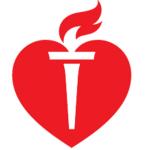American Heart Association- “Guideline Advantage” Best Practices
Improving the Patient Experience
American Heart Association- “Guideline Advantage” Best Practices

American Heart Association- “Guideline Advantage” Best Practices
AHA is the largest voluntary health organization in country dedicated to improving the lives of cardiovascular and stroke patients. We have a 20/20 impact goal to improve cardiovascular health of all Americans by 20% by the year 2020. As a national organization, we have 7 offices across the country that are responsible for rolling out local and statebased activities. We have clinician members, however, we are a patient organization. Our clinician members offer a professional council and a clinical vantage point. There are 30 million clinician and advocate volunteers which include patients, family members, caregivers etc.
AHA's innovation is a program called “Guideline Advantage” which is a quality improvement program enabled by a registry that helps physicians to monitor and track their patient populations. It sits on top of the EHR and is vendor agnostic. It is a collaborative project with the American Diabetes Association and American Cancer Society. The program itself is a qualified data registry for the purposes of reporting.
The program was built on the AHA clinical care guidelines and is intended to speed the time for which clinical guidelines are put into practice and support physicians in delivering evidence based care. The program is also aimed at identifying gaps in care so that physicians can target their care to address these deficiencies. At a practice level physicians are finding that it gives them the data the need to manage their patients on a population level. It provides more usable information that can be extended to offer clinical insight at a population level.
Utilizing health IT will improve health outcomes of patients in the short-term by leveraging information in the system that can be used by physicians to improve delivery, and increase evidence based care being delivered and better health outcomes in the long-term, ultimately moving towards AHA's 2020 goal.
Best Practices
- Utilizing expertise - As AHA is a volunteer based organization, we drew on the expertise of our volunteers and the volunteers at The American Cancer Society and The American Diabetes Association. We used volunteer boards to help lay out what the program should look like, decide which guidelines to focus on, and what information clinicians will need during and after the point of care. The actual infrastructure of the program was created by a vendor called Forward Health Group.
- Coordination - We have had to work with the 2 other organizations to ensure buy-in across the board. This entailed working with their members and that of the other organizations’. We also worked with internal staff to plan the day to day operation of the program. Buy-in had to be obtained from primary care physicians, oncologists and other physicians. AHA’s side worked through details with volunteers to make sure we were comfortable with the central premise and structure of the program at every step of the process. From a physician standpoint, it involved conducting demonstrations, going into practices and making sure it sits on top of existing technology. A lot of onboarding was done initially by working with both other organizations from the onset so that it did not seem like one organization’s project. This involved a lot of internal messaging working with external physicians to help them understand how this program achieves the organization’s mission. There is still a fair amount of internal by-in that needs to happen in order propel its success further.
- Education and training - Stakeholders were prepared through upfront knowledge building on the product; explaining what it can do. Once we decide we want to implement product there is prep work to make sure data map and the tools work. Following this is a series of trials and tests to make sure that it is operating effectively. A fair amount of training is also involved- although it does not necessarily require changes in workflow, training is needed in terms of how it can be used to help current quality improvement programs in practices. A fair amount of education and organization capacity building is also required. Once implemented, technical assistance is offered to help them optimize their use of the tool.
- Showcasing potential - The assumed response by physicians is that this is going to be more work or more of an administrative burden. We had to do a lot of hand holding demonstrations to help them to see the potential of their data by demonstrating what it can do. This required efforts to connect this program to other existing programs that physicians were using.

